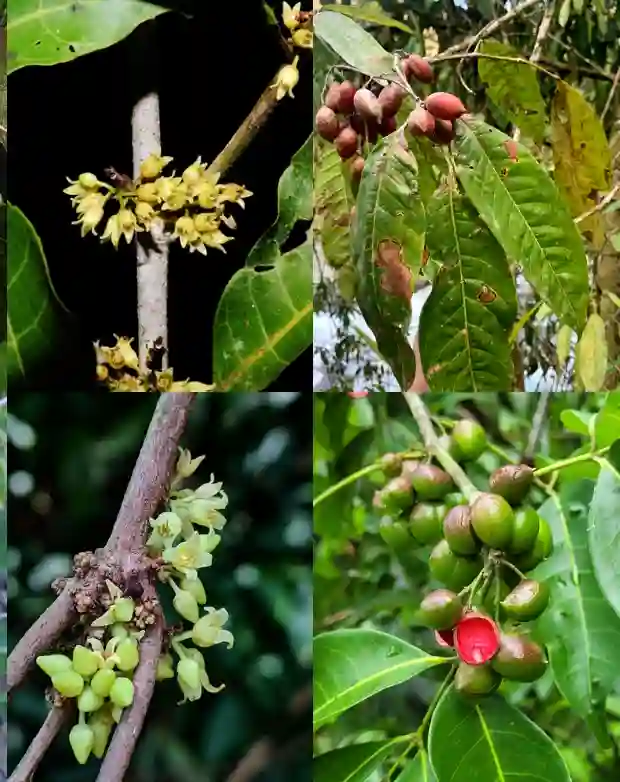
Ficus Villosa: Your Guide to the Fuzzy Fig Vine
Hi, Ferb Vu here. I’m a plant enthusiast with a particular fondness for the unique and interesting. Today, we’re diving into the world of the Ficus Villosa, a plant that might just steal the show in your indoor jungle.
880 Species in Genus Ficus
What is a Ficus Villosa?
The Ficus Villosa, also known as the Fuzzy Fig Vine, is a captivating climber native to Southeast Asia. This slow-growing vine boasts stunning reddish-green leaves covered in a soft fuzz, giving it a velvety texture and an almost iridescent shimmer. New growth emerges a vibrant red before maturing to a deep, glossy green. As a climber, the Ficus Villosa thrives when given a support structure to ascend, making it a perfect candidate for moss poles or hanging baskets.
Ficus Villosa vs. Other Ficus Species
Ficus is a vast genus with hundreds of species, but the Villosa stands out for its fuzzy foliage and climbing nature. Here’s a quick comparison to some popular relatives:
- Ficus Elastica (Rubber Plant): A larger, faster-growing Ficus known for its large, glossy leaves. Less fussy about light than the Villosa.
- Ficus Lyrata (Fiddle Leaf Fig): Another popular choice with large, violin-shaped leaves. Requires more light than the Villosa and can be prone to drama if its needs aren’t met.
- Ficus Benjamina (Weeping Fig): A graceful, cascading Ficus with smaller, oval leaves. More tolerant of lower light than the Villosa but can be sensitive to drafts and repotting.
How to care for Ficus Villosa?
The Ficus Villosa isn’t difficult to care for, but understanding its needs will ensure it thrives. Here’s the lowdown:
- Light: Bright, indirect light is ideal. Avoid harsh, direct sun which can scorch the leaves. East or north-facing windows are perfect.
- Water: Consistent moisture is key. Water when the top inch of soil feels dry to the touch. Avoid soggy soil, which can lead to root rot.
- Humidity: Moderate to high humidity is preferred. Grouping plants together, using a pebble tray, or a humidifier can all help.
- Temperature: Warm temperatures (65-80°F) are ideal. Avoid cold drafts and sudden temperature fluctuations.
- Soil: Well-draining, aerated potting mix is essential. A mixture of potting soil, perlite, and orchid bark can work well.
- Fertilizer: Feed your Ficus Villosa a balanced fertilizer once a month during the growing season (spring and summer). Hold off on fertilizing during winter.
Propagation: Sharing the Fuzzy Love
Ficus Villosa can be propagated through stem cuttings. Here’s a simple method:
- Take a healthy stem cutting with a few nodes.
- Dip the cut end in rooting hormone (optional but can improve success rate).
- Plant the cutting in a pot with moist, well-draining soil.
- Cover the pot with a clear plastic bag to create a humid environment.
- Place the pot in bright, indirect light and keep the soil moist.
- Remove the plastic bag once new growth appears (usually after a few weeks).
Common Ficus Villosa Problems and Solutions
While generally low-maintenance, Ficus Villosa can encounter a few issues:
- Leaf drop: This can be caused by underwatering, overwatering, lack of light, or sudden changes in environment. Address the underlying cause and your plant should recover.
- Brown leaves: This can be due to sunburn, underwatering, or low humidity. Adjust light and watering accordingly and increase humidity levels.
- Pests: Mealybugs and spider mites are occasional visitors. Treat with insecticidal soap or neem oil.
Ficus Villosa: The Fuzzy Fig Vine for You?
The Ficus Villosa offers a unique combination of captivating looks and manageable care. With its fuzzy texture, climbing habit, and air-purifying properties, it can be a wonderful addition to your indoor plant collection. Just remember, provide it with the right environment and a little TLC, and your Ficus Villosa will reward you with years of lush, fuzzy foliage.
If i die, water my plants!



